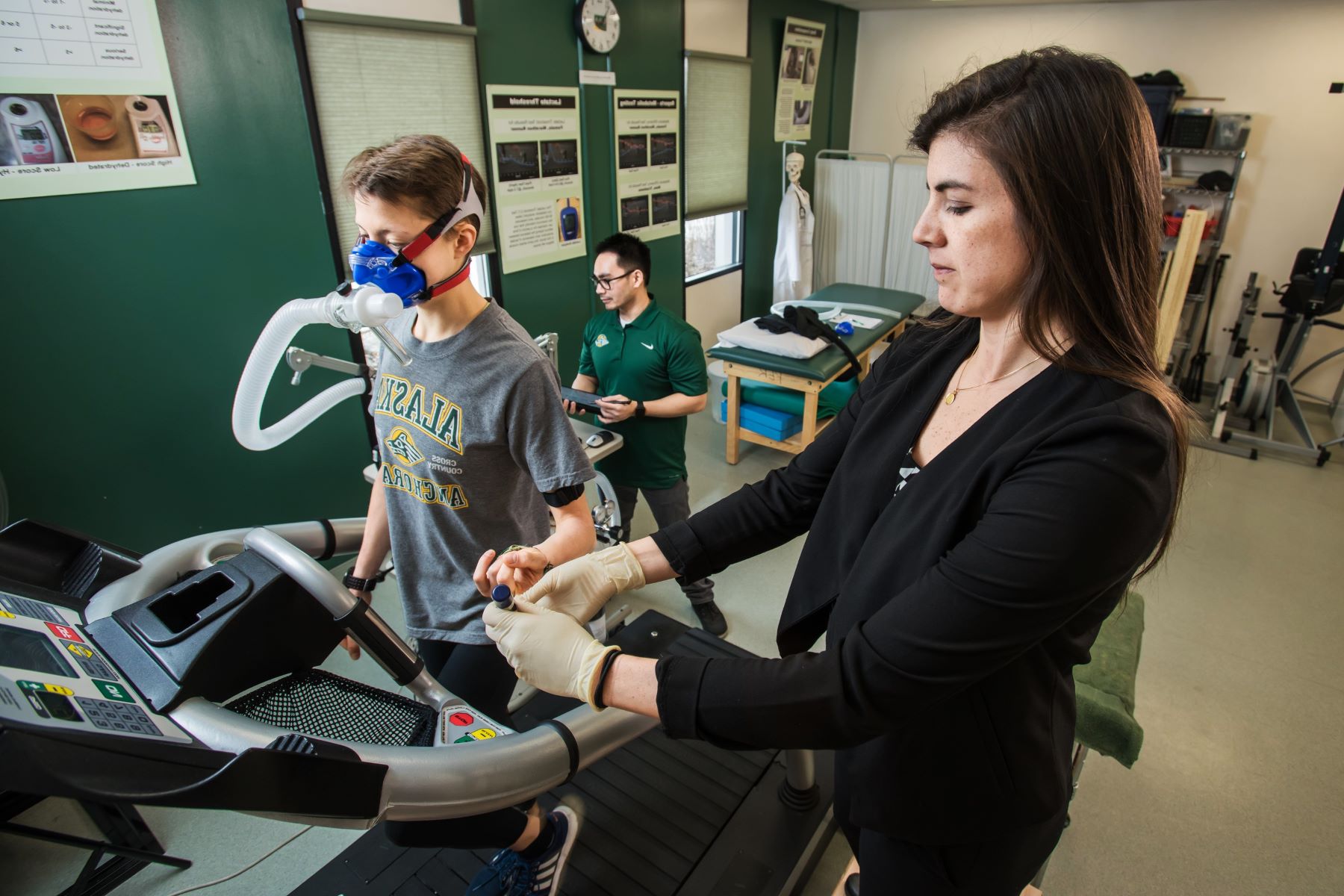Home>Health & Nutrition>Injury Prevention>Identifying Foot Stress Fractures: Testing Methods And When To Consult A Physiotherapist


Injury Prevention
Identifying Foot Stress Fractures: Testing Methods And When To Consult A Physiotherapist
Published: February 24, 2024
Learn about testing methods for identifying foot stress fractures and when to consult a physiotherapist for injury prevention. Understand the signs and symptoms to address foot injuries effectively.
(Many of the links in this article redirect to a specific reviewed product. Your purchase of these products through affiliate links helps to generate commission for Therunningadvisor.com, at no extra cost. Learn more)
Table of Contents
Understanding Foot Stress Fractures
Foot stress fractures are tiny cracks in the bone caused by repetitive force or overuse, commonly found in the weight-bearing bones of the lower extremities. These fractures often occur in the metatarsal bones of the foot, as well as the calcaneus (heel bone) and the navicular bone. Athletes, especially runners and dancers, are particularly susceptible to foot stress fractures due to the repetitive impact and strain placed on their feet during training and performance.
The repetitive stress on the bones can overwhelm the body's natural healing process, leading to the development of these micro-fractures. Additionally, factors such as improper footwear, sudden changes in physical activity, and poor biomechanics can contribute to the increased risk of developing foot stress fractures.
Understanding the underlying causes and risk factors associated with foot stress fractures is crucial for effective prevention and management. By recognizing the impact of repetitive force on the bones and the potential consequences of overuse, individuals can take proactive measures to minimize the risk of sustaining these debilitating injuries.
Furthermore, gaining insight into the biomechanics of the foot and the distribution of forces during weight-bearing activities can provide valuable knowledge for athletes, coaches, and healthcare professionals. This understanding enables them to implement targeted interventions and training modifications to reduce the strain on the bones and mitigate the risk of developing stress fractures in the feet.
In essence, comprehending the nature of foot stress fractures empowers individuals to make informed decisions regarding their physical activities, footwear choices, and training regimens. By acknowledging the significance of early intervention and adopting preventive strategies, individuals can strive to safeguard their foot health and minimize the impact of repetitive stress on their bones.
Common Testing Methods for Foot Stress Fractures
Accurately diagnosing foot stress fractures is essential for implementing appropriate treatment and preventing further complications. Healthcare professionals utilize various testing methods to assess and confirm the presence of these micro-fractures in the bones of the foot. These diagnostic approaches are instrumental in providing valuable insights into the extent and location of the fractures, enabling tailored management strategies to promote optimal recovery.
1. Physical Examination
A comprehensive physical examination conducted by a healthcare provider is often the initial step in evaluating foot stress fractures. The examination may involve assessing the affected foot for localized tenderness, swelling, and bruising. Additionally, the healthcare professional may inquire about the individual's medical history, including details about their physical activities, footwear, and any previous injuries. By gathering this information, the healthcare provider can gain a better understanding of the potential risk factors and contributing factors associated with the development of foot stress fractures.
2. Imaging Studies
Imaging studies, such as X-rays, bone scans, magnetic resonance imaging (MRI), and computed tomography (CT) scans, play a pivotal role in confirming the presence of foot stress fractures. X-rays are commonly used to detect stress fractures, as they can reveal subtle changes in the bone structure. However, in some cases, particularly when the fractures are not clearly visible on X-rays, additional imaging modalities such as MRI or bone scans may be employed to provide a more detailed assessment of the affected area. These imaging studies enable healthcare professionals to visualize the extent and location of the fractures, facilitating accurate diagnosis and targeted treatment planning.
3. Bone Stress Testing
Bone stress testing, also known as bone loading tests, involves applying controlled stress to the bones of the foot to assess their response and detect potential micro-fractures. This testing method may include weight-bearing radiographs or specialized mechanical devices that measure the distribution of forces within the foot during weight-bearing activities. By subjecting the bones to controlled stress and analyzing their biomechanical behavior, healthcare professionals can identify stress fractures that may not be evident on static imaging studies alone. This dynamic assessment provides valuable insights into the functional integrity of the bones, guiding the development of tailored treatment and rehabilitation protocols.
4. Ultrasound Evaluation
Ultrasound imaging is increasingly utilized in the assessment of foot stress fractures, offering real-time visualization of the soft tissues and bones. This non-invasive and radiation-free modality can aid in identifying subtle changes in the bone structure and detecting the presence of stress fractures. Ultrasound evaluation allows healthcare professionals to assess the affected area dynamically, observing the response of the tissues to mechanical stress and providing valuable information for accurate diagnosis and treatment planning.
Incorporating a combination of these testing methods enables healthcare professionals to comprehensively evaluate foot stress fractures, facilitating timely diagnosis and targeted interventions. By leveraging the insights gained from physical examinations, imaging studies, bone stress testing, and ultrasound evaluation, healthcare providers can deliver personalized care and support individuals in their journey towards recovery and optimal foot health.
Signs and Symptoms of Foot Stress Fractures
Identifying the signs and symptoms of foot stress fractures is crucial for prompt recognition and appropriate management of these micro-fractures. Individuals who engage in high-impact activities or repetitive weight-bearing exercises should remain vigilant for the following indicators, which may signify the presence of foot stress fractures:
-
Localized Pain: Persistent pain in the affected foot, particularly during weight-bearing activities or when pressure is applied to specific areas, can be indicative of stress fractures. The pain may intensify during physical exertion and subside with rest, reflecting the impact of repetitive stress on the bones.
-
Tenderness and Swelling: The presence of localized tenderness and swelling in the affected area of the foot may signal the development of stress fractures. Individuals may experience discomfort when palpating the affected bone, and the surrounding soft tissues may exhibit signs of inflammation, such as redness and swelling.
-
Gradual Onset of Symptoms: Foot stress fractures often manifest as a gradual onset of symptoms, with individuals noticing increasing discomfort and pain over time. This progressive nature of the symptoms underscores the cumulative effect of repetitive force on the bones, highlighting the importance of early detection and intervention.
-
Changes in Gait or Movement Patterns: Individuals with foot stress fractures may alter their gait or movement patterns to alleviate the discomfort and minimize pressure on the affected foot. These adaptations can manifest as limping, favoring one side while walking, or modifying the distribution of weight during weight-bearing activities.
-
Localized Bruising: In some cases, individuals may observe localized bruising or discoloration in the area of the foot affected by stress fractures. The presence of bruising may indicate the disruption of blood vessels due to micro-fractures in the bone, emphasizing the need for thorough evaluation and diagnosis.
-
Increased Discomfort with Activity: Engaging in physical activities that involve repetitive impact or weight-bearing may exacerbate the discomfort associated with foot stress fractures. Individuals may notice heightened pain and discomfort during activities such as running, jumping, or prolonged standing, reflecting the impact of mechanical stress on the affected bones.
Recognizing these signs and symptoms of foot stress fractures empowers individuals to seek timely evaluation and intervention from healthcare professionals. By remaining attentive to changes in pain, tenderness, swelling, and movement patterns in the foot, individuals can take proactive steps to address potential stress fractures and mitigate the risk of further complications. Early identification of these indicators facilitates targeted diagnostic testing and personalized treatment planning, fostering optimal recovery and the preservation of foot health.
When to Consult a Physiotherapist for Foot Stress Fractures
Seeking the expertise of a physiotherapist is paramount for individuals experiencing foot stress fractures, as these specialized healthcare professionals play a pivotal role in facilitating comprehensive assessment, targeted interventions, and rehabilitative strategies to promote optimal recovery and mitigate the risk of recurrent injuries. The following indicators serve as crucial prompts for individuals to consider consulting a physiotherapist for the management of foot stress fractures:
1. Persistent or Worsening Symptoms
If the symptoms of foot stress fractures persist or worsen despite rest and self-care measures, it is imperative to seek the guidance of a physiotherapist. Persistent pain, tenderness, and swelling in the affected foot may signify the need for specialized evaluation and intervention to address the underlying biomechanical factors contributing to the development of stress fractures.
Read more: Understanding The Purpose Of A Sweat Test
2. Impaired Functional Mobility
Individuals experiencing limitations in their functional mobility, such as difficulty walking, bearing weight on the affected foot, or engaging in regular physical activities, should consider consulting a physiotherapist. Impaired mobility can significantly impact daily routines and overall quality of life, underscoring the importance of tailored rehabilitation and therapeutic interventions to restore optimal function and movement patterns.
3. Recurrent Stress Fractures
For individuals with a history of recurrent foot stress fractures or those at a heightened risk due to their athletic pursuits or occupational demands, consulting a physiotherapist is essential for implementing targeted preventive strategies. By addressing underlying biomechanical imbalances, gait abnormalities, and training-related factors, physiotherapists can collaborate with individuals to minimize the risk of recurrent injuries and optimize foot health.
4. Inadequate Response to Initial Treatment
If initial treatment measures, such as rest, activity modification, and pain management, fail to alleviate the symptoms of foot stress fractures, seeking the expertise of a physiotherapist is warranted. Physiotherapists can conduct comprehensive assessments to identify contributing factors, develop personalized rehabilitation plans, and implement evidence-based interventions to support the healing process and prevent long-term complications.
5. Return to Physical Activity
Individuals aiming to resume physical activity following the diagnosis and initial management of foot stress fractures can benefit from the guidance of a physiotherapist. These professionals can provide structured rehabilitation programs, gradual return-to-activity protocols, and biomechanical assessments to ensure safe and effective reintegration into sports, exercise, and daily activities while minimizing the risk of reinjury.
By recognizing these prompts and engaging the expertise of physiotherapists, individuals can access specialized care tailored to their unique needs, fostering optimal recovery, and empowering them to prioritize their foot health and overall well-being. The collaborative efforts between individuals and physiotherapists play a pivotal role in addressing the multifaceted aspects of foot stress fractures, promoting functional restoration, and enhancing long-term foot health and resilience.














